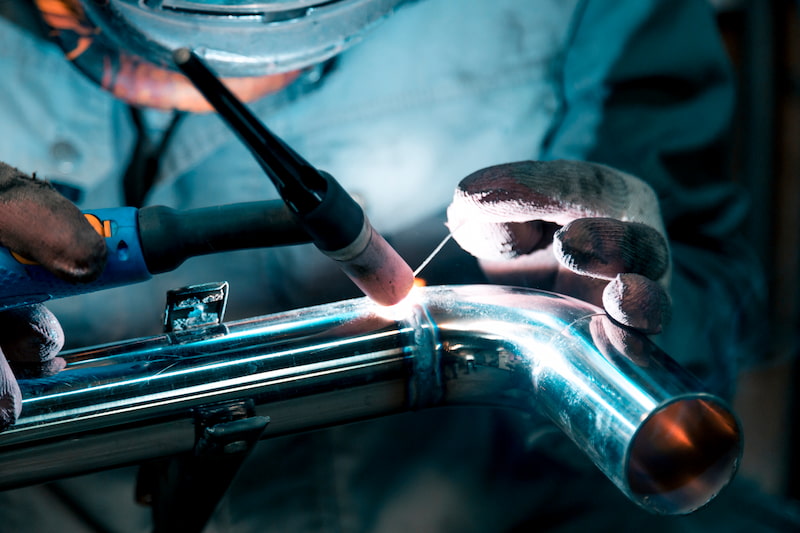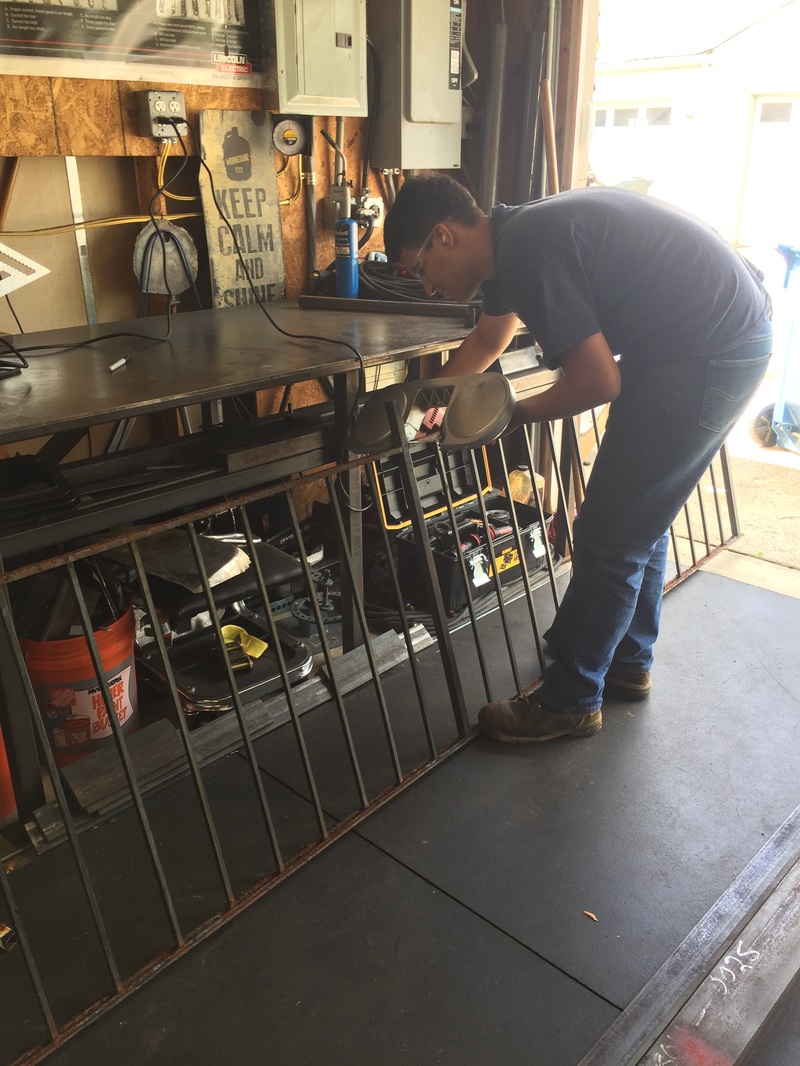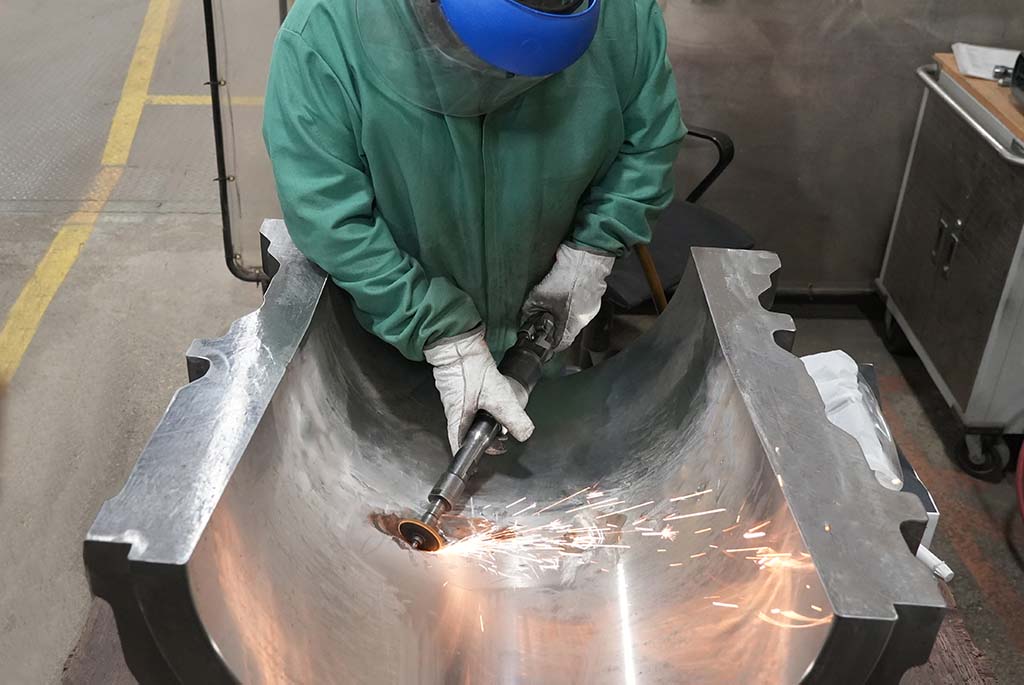Typical Welding Repair Work Issues and Exactly How to Address Them Effectively
Welding repair services typically experience an array of concerns that can jeopardize the integrity of the end product. Common troubles consist of insufficient infiltration, porosity, and imbalance, among others. Each issue presents special difficulties that call for details methods for resolution. Recognizing these issues is important for welders intending to boost their abilities and outcomes. This conversation will discover these common welding repair service concerns and efficient methods to address them.
Insufficient Penetration
Inadequate infiltration occurs when the weld metal fails to completely fuse with the base material, causing weak joints and potential architectural failings. This issue often stems from inadequate warm input, incorrect electrode angle, or improper welding speed. Welders may run into poor infiltration as a result of a miscalculation of the required parameters for a particular material density or type. Furthermore, contamination on the base product's surface area can impede efficient bonding, exacerbating the problem. To address inadequate infiltration, welders ought to assure proper setups on their equipment and maintain a tidy work surface area. Routine evaluation of welds is suggested to identify any shortages early, enabling prompt modifications and the avoidance of endangered structural integrity in welded settings up.
Porosity
Porosity is an usual defect in welded joints that materializes as small gas bubbles caught within the weld steel. This defect can endanger the honesty of the weld, leading to minimized strength and potential failing under anxiety. Montana Mobile Welding and Repair. Porosity usually occurs from contamination, wetness, or inappropriate welding techniques, which permit gases to get away right into the liquified weld pool. To resolve porosity, welders need to guarantee correct surface area prep work, preserve a clean workplace, and use ideal welding specifications. Additionally, choosing the best filler material and securing gas can mitigate gas entrapment. Normal inspection and screening of welds can assist recognize porosity early, guaranteeing timely corrective activities are taken, thus maintaining the top quality and dependability of the welded structure
Misalignment
Misalignment in welding can occur from various elements, including inappropriate setup and thermal growth. Understanding the root causes is essential for effective resolution. Several correction methods are offered to realign parts and guarantee structural honesty.
Reasons for Misalignment
Welding imbalance usually stems from a variety of underlying problems that can endanger architectural stability. One main cause is incorrect fit-up of components prior to welding, which can lead to gaps and uneven surface areas. Variants in thermal growth throughout the welding process can likewise cause distortion, specifically if the materials being joined have various coefficients of development. In addition, poor fixturing and clamping might fail to hold elements firmly in position, bring about motion throughout welding. Improperly kept devices, consisting of welding machines and devices, might present variances in the weld bead, additional adding to misalignment. Operator mistake, stemming from not enough training or experience, can likewise play a significant function in developing misaligned welds.

Improvement Strategies Offered
Resolving imbalance effectively needs a combination of rehabilitative methods customized to the details problems at hand. One usual method is making use of jigs or fixtures to hold parts in the proper position throughout welding, ensuring constant placement. Furthermore, pre-heating the materials can assist decrease distortion and enhance fit-up. For significant misalignment, mechanical realignment techniques, such as using hydraulic jacks or clamps, can be used to deal with the setting before welding. Post-weld warm therapy may likewise be required to soothe stresses triggered by misalignment. Careful examination and modification throughout the arrangement phase can avoid imbalance concerns from ending up being substantial troubles, promoting a smoother welding process and boosting total architectural honesty.
Distortion
Distortion is a common challenge in welding that can arise from numerous factors, consisting of unequal cooling and heating. Comprehending the root causes of distortion is crucial for executing efficient avoidance techniques. Addressing this concern not just enhances architectural integrity yet likewise enhances the overall top quality of the weld.
Reasons for Distortion
When based on the intense heat of welding, materials usually undergo adjustments that can lead to distortion. This phenomenon mainly occurs from thermal growth and contraction throughout the welding process. As the weld location warms up, the product broadens; upon cooling, it gets, which can develop interior stresses. On top of that, unequal heating throughout a work surface can exacerbate these anxieties, leading to warping or flexing. The sort of material also plays a considerable role; steels with differing thermal conductivity and coefficients of growth might respond in a different way, causing uncertain distortions. Poor joint design and poor fixturing can add to misalignment throughout welding, increasing the probability of distortion. Recognizing these causes is vital for efficient welding fixing and avoidance approaches.
Prevention Techniques
Efficient avoidance strategies for distortion during welding concentrate on controlling heat input and guaranteeing proper joint style. Preserving a consistent warmth input helps to minimize thermal development and contraction, which can bring about distortion. Making use of methods such as preheating the work surface can additionally decrease the temperature gradient, advertising uniform heating. In addition, picking appropriate joint designs, such as T-joints or lap joints, can boost stability and lower anxiety concentrations. Implementing proper fixturing to protect the workpieces in position better aids in keeping alignment throughout the welding procedure. Staggered welding sequences can distribute warm extra equally, preventing localized distortion. By using these strategies, welders can considerably lower the likelihood of distortion and enhance the overall high quality of their welds.
Breaking
Fracturing is an usual concern encountered in welding repairs, often resulting from different aspects such as incorrect air conditioning prices, product choice, or insufficient joint preparation. The occurrence of fractures can substantially jeopardize the stability of the weld, leading to potential failures during procedure. To address this concern, welders should first examine the origin, guaranteeing that products work and appropriately selected for the details application. Furthermore, managing the air conditioning rate throughout the welding procedure is vital; quick cooling can induce stress and anxiety and result in breaking. Correct joint style and prep work additionally add to decreasing the risk. Applying these methods can improve weld top quality and toughness, eventually lowering the likelihood of breaking in completed weldments.

Incomplete Combination
A significant concern in welding repairs is incomplete fusion, which takes place when the weld metal does not appropriately bond with the base material or previous weld passes - Montana Mobile Welding and Repair Welding. This problem can cause weaknesses in the joint, potentially jeopardizing the integrity of the welded structure. Elements adding to insufficient blend consist of inadequate warm input, inappropriate welding method, and contamination of the surfaces being signed up with. To resolve this issue successfully, welders need to assure appropriate pre-weld cleansing and surface prep work, in addition to adjust their welding criteria to accomplish adequate penetration and combination. Routine inspection throughout the welding process can additionally aid determine incomplete combination early, permitting prompt restorative measures to boost the general quality of the weld
Overheating
While welding repair work can boost architectural honesty, overheating provides a substantial challenge that can bring about material destruction. Extreme warmth throughout welding can change the mechanical buildings of steels, causing reduced stamina, raised brittleness, and warping. This sensation is specifically vital in high-stress applications where architectural reliability is critical. Recognizing getting too hot can entail aesthetic evaluations for staining or distortion, as well as keeping an eye on temperature throughout the welding procedure. To minimize the dangers related to overheating, welders should employ suitable methods, such as controlling warmth input, adjusting travel rate, and making use of suitable filler materials. In addition, applying pre- and post-weld heat treatments can aid bring back product residential or commercial properties and improve the general top quality of the repair, making sure long-lasting efficiency and safety and security.
Regularly Asked Concerns
What Are the Typical Signs of a Welding Issue?

How Can I Examine My Welds for High quality?
To test welds for high quality, one can make use of visual inspections, ultrasonic testing, and radiographic techniques. Each method assures architectural honesty, determines flaws, and verifies adherence to specified requirements, ultimately improving the dependability of the welded joints.
What Security Preventative Measures Should I Take While Welding?
When welding, one should focus on safety by wearing proper individual safety tools, ensuring correct air flow, safeguarding flammable materials away, preserving a clean office, and being aware of surroundings to stop injuries and accidents.
Can I Repair a Weld Without Remodeling the Entire Joint?
Fixing a weld without remodeling the whole joint is possible, depending upon the damage (Belgrade Fabrication). Strategies such as grinding, including filler material, or using a welding procedure can properly address details flaws while maintaining the bordering framework
What Devices Are Necessary for Efficient Welding Fixes?
Vital devices for reliable website welding repairs consist of a welding equipment, cord brush, mill, safety equipment, clamps, and filler products. Each device plays a vital function in making sure high quality and safety during the repair procedure. Porosity normally develops from contamination, moisture, or inappropriate welding methods, which allow gases to run away into the liquified weld pool. Poorly maintained tools, including welding equipments and devices, may introduce incongruities in the weld bead, further contributing to misalignment. When subjected to the intense warm of welding, materials commonly go through modifications that can lead to distortion. Breaking is an usual problem encountered in welding fixings, usually resulting from various variables such as incorrect air conditioning rates, material option, or insufficient joint preparation. A substantial issue in welding repair work is incomplete combination, which occurs when the weld steel does not adequately bond with the base product or previous weld passes.